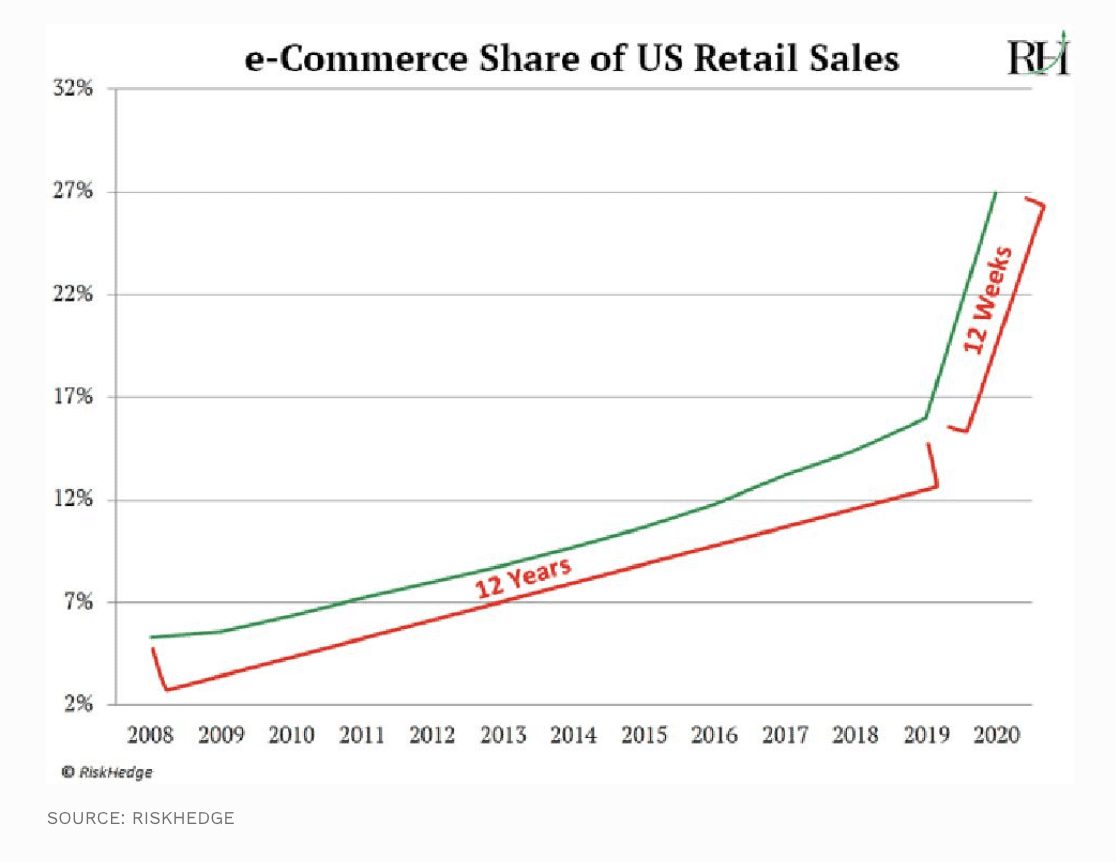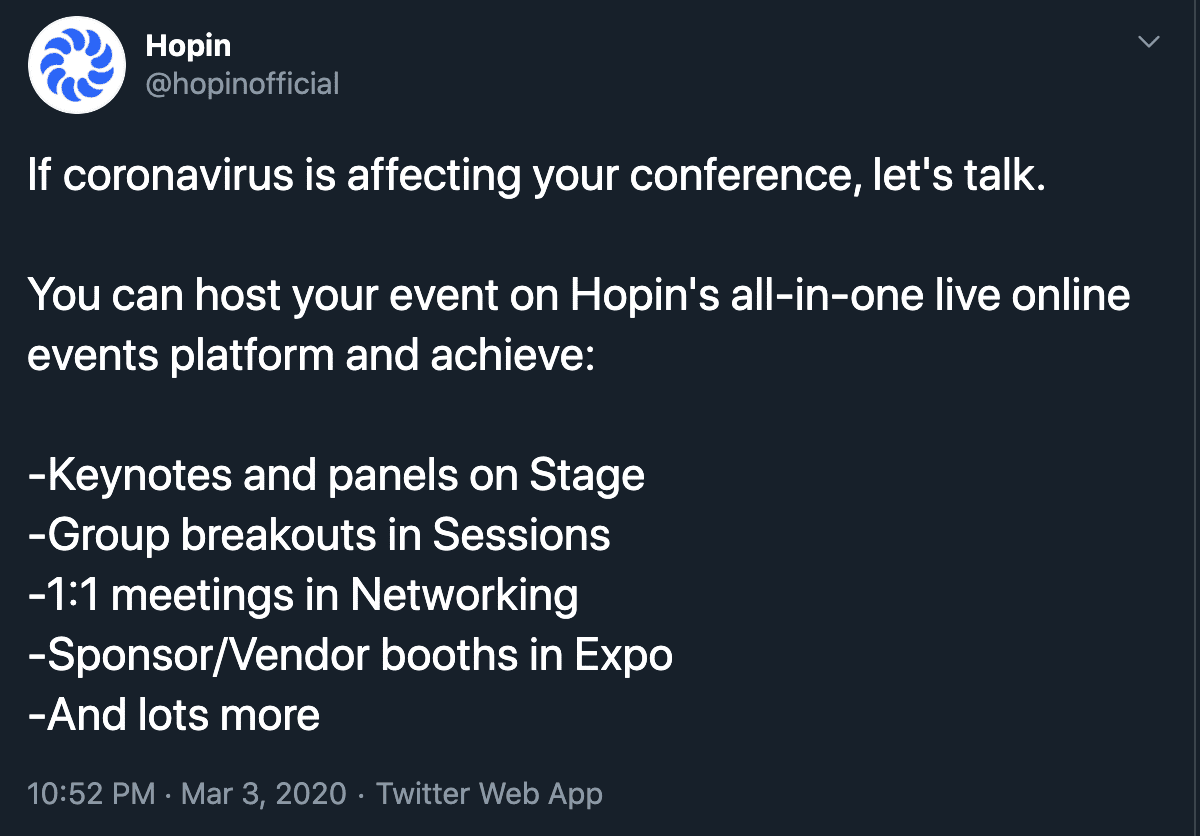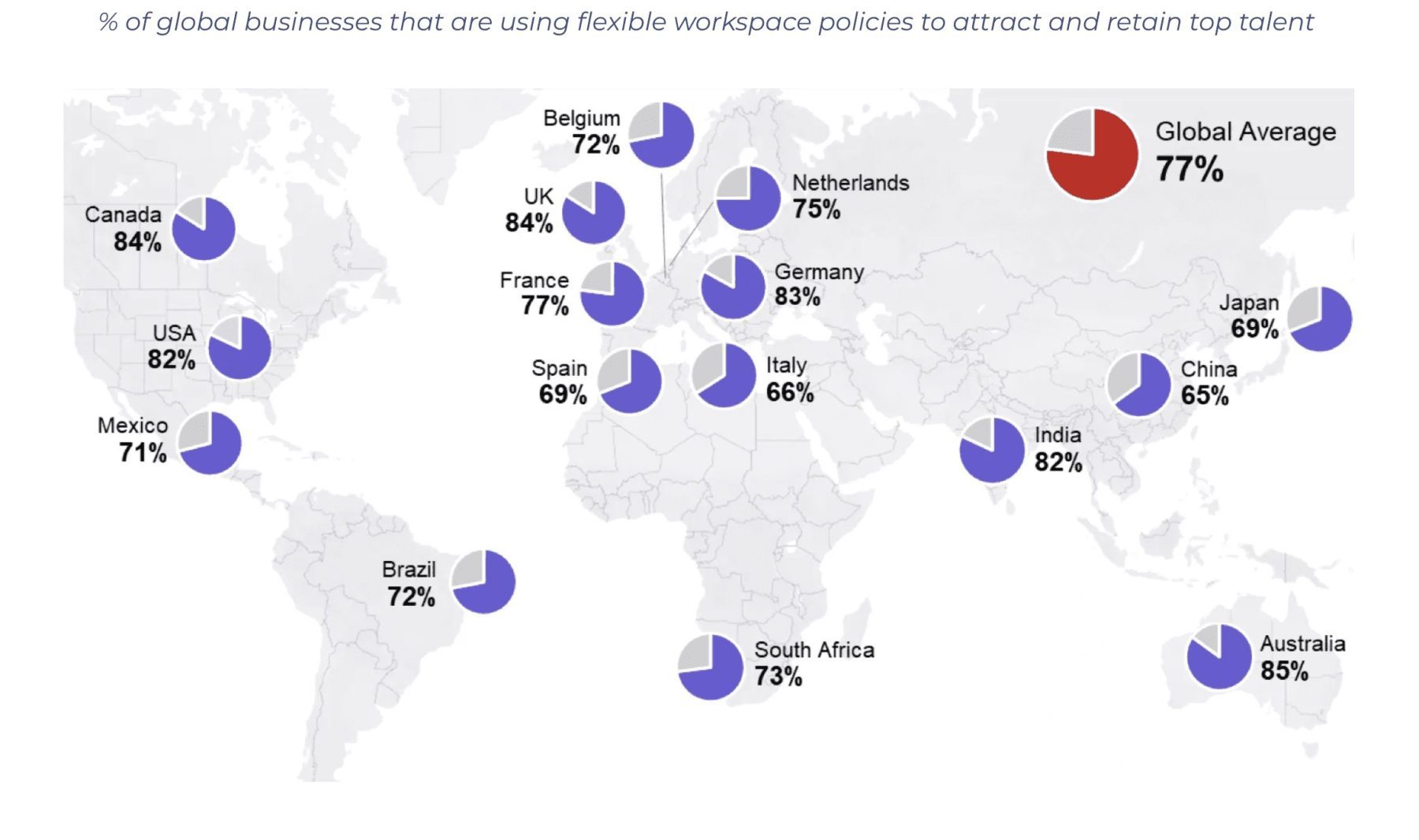“An alien invasion brings humanity to the brink of extinction, you find refuge with a group of survivors in an underground government facility. But you quickly realize that this may not be the safe haven that you had hoped for. There is fear, chaos, and political conspiracy. Your choices will determine the fate of your bunker…”
Calm down, this did not happen in 2020 (yet!). This is the description of Hunt A Killer’s sci-fi mystery box. Hunt A Killer is a subscription-based immersive murder experience in a box. Each box is an episode with clues and props that will get the player closer to solving a new crime every month.
After multiplying its revenue of $100,000K in 2016 many times over to reach $27.3 million in 2019, Hunt A Killer has earned the No. 6 spot on this year’s Inc. 5000, making it one of the fastest-growing companies in America. Last year, it was named one of Fast Company‘s most innovative gaming businesses of 2019. And it is showing no signs of slowing down, with more than 100000 subscribers joining, new product lines being released, and revenue once again on track to double in 2020.
And this is just one of the success stories.
The immense growth in digital transformation during the pandemic has given businesses like Hunt A Killer a once in a lifetime opportunity to scale. Despite the uncertainties, the leaders who viewed the glass as ‘half full’ stand to share their success stories with a world wary of the next big wave of change. As part of our Champions of Change series, we decided to throw the spotlight on a few of the leaders who used this change to carve out opportunities to scale.
The few things they did were,
Strategic positioning & identifying new opportunities
Strategic positioning & identifying new opportunities
The perfect opportunity
What started as the solution to fight Eric Yuan’s woes of a long-distance relationship, is currently a household name across the globe. Zoom took off at a larger scale in 2020 with people being sheltered-at-home and it became an integral part of everyone’s lives.
For Eric, the focus has always been on building a loyal customer base and adding new features. “When you build any product, you’ve got to have a very loyal user base to service. If you cannot find a very loyal user community, it’s really hard.” Today, that focus has paid off, and Zoom has a vast and loyal customer base among SMBs, verticals like education and healthcare. More than 100,000 K-12 schools signed up to use the platform for free during the pandemic.
As teams of users within large organizations are increasingly starting to use Zoom, the company added 105,000 customers with more than 10 employees during Q2, taking the total count to 370,000 customers. “Organizations are shifting from addressing their immediate business continuity needs to supporting a future of working anywhere, learning anywhere, and connecting anywhere on Zoom’s video-first platform,” said Eric in the recent earnings release.
One notable thing to emphasize is Zoom’s back-end infrastructure, which a Zoom spokesperson said was “built to handle these growing levels of activity.” Yuan has said that the coronavirus experience has broadened his view on what it means to be a video communications technology provider in times of need. That attitude of learning from experiences teamed with a scalable infrastructure launched Zoom into its growth trajectory.
Creating the perfect opportunity
Not everyone was as lucky as Zoom to have an opportunity to land on their laps. Few of them strategically positioned themselves to benefit from the given circumstances.
Growing up in South America, Adrian Ridner, CEO of Study.com, understood from a young age that education is the only way to overcome poverty and thrive in society. Study.com was thus created to address the rising cost of higher education and helped transfer industry credits into university courses. Study.com provides more than 4500 online courses at all levels including high school, college, adult education, and professional licensure.
For e-learning, the tipping point has been the global pandemic which shifted billions of students across schools and colleges to virtual classrooms overnight. However it was not just the students, millions of professionals are signing up for online classes to spruce up their skills set as they change jobs or careers.
It was a once-in-a-lifetime opportunity that Study.com wasn’t going to let go of. So, they have positioned themselves to make learning exciting and accessible at lower rates. Today they are successfully helping more than 30 million students and schools conduct remote classes to shrink the learning gap. The payment infrastructure can get tangled while scaling and here is where Chargebee pitched in. It helped Study.com handle global payments, experiment with pricing, and tax compliance across these markets giving them the agility to respond to this once-in-a-lifetime opportunity.
Voitek Sobieszczanski, VP of Finance, Study.com was quoted saying, “Chargebee has helped us acquire a more diverse set of customers. This includes a significant amount of international users who were unable to previously access the site.”
Creating the perfect opportunity for others
Another way in which companies have scaled significantly is by helping other companies grow. Even before the pandemic, Shopify was known for its simplicity in setting up to be an e-commerce platform. During the crisis, Shopify helped struggling mom-and-pop businesses capitalize on increasing e-commerce penetration. They helped these mom-and-pop stores recoup 94% of their sales as they went online with the help of Shopify this year.
For Shopify it was a repeat of 2008 when they doubled down on their mission to help entrepreneurs drive revenue, “None of our customers were going out of business because they had Shopify. It was a well designed, affordable online store. In fact, a lot of people ended up selling online to get a second income stream,” said Tobi Lütke, CEO and Founder, Shopify. “A major disruption, [like the ‘08 Recession or a global pandemic] is sort of like shaking a tree and seeing what fruit fall off.”
Shopify now wants to go beyond just offering an easy-to-use e-commerce platform but facilitate every process involved in shopping. Besides its platform, the company now offers a range of products from emailing and shipping to financial services. According to Shopify, its Shop Pay is used by 40M shoppers regularly and delivers a 1.72x higher sales conversion rate.

By capitalizing on e-commerce sales which are expected to reach $4.13 trillion in 2020, and by acting as an invisible partner that allows businesses to build their brand online, Shopify is well on its way to becoming the one-stop-shop for everything e-commerce.
Experiment with Pricing
The Covid-19 outbreak led to many event organizers to cancel or postpone several marquee events such as Mobile World Congress, Facebook, and Google’s annual developer conferences and music festivals including Coachella. Organizers also pulled the plug on several thousands of smaller events.
Hopin, a virtual event management platform launched in September 2019, a mix of Zoom, Twitch, and Chaatroulete started to offer discount pricing to organizers affected by the coronavirus.

Even before the crisis hit, Hopin struck a chord among investors who were betting that the company will create a new category and a new kind of behavior where people will start choosing the digital alternative over stuffy conference centers. “We are building a solution to what has been missing for so long: a platform people can use to build online events that match the dynamism of an interactive, in-person experience,” said, Johnny Boufarhat, Founder, Hopin. Boufarhat was the most sought after seed-stage founder in London who had investors knocking at his door with flowers and champagne.
For Hopin, COVID-19 has been an accelerator. As the pandemic spread, Hopin realized that companies were going to switch from in-person events to webinars. So, it made Hopin available, earlier, than planned. The “number of monthly attendees of events” hosted using its technology grew from 16,000 in March — when it came of its stealth mode — to 175,000 in May. Within a year after its launch, Hopin has seen nearly 1 million users attending events hosted by more than 16,000 organizations.
Now the company has more than 50,000 customers on the waitlist with more than 1,000 joining every day. Earlier this year Hopin raised $40 million to scale up its platform to expand its team to meet the surge in demand and onboard more customers.
Any actions from the extension of payment terms to providing discounts to attract new customers to have cash flow and accounting consequences. You first need to assess their financial situation and flexibility before addressing customer requests. We recently spoke with Karthik Srinivasan, senior director of finance at Chargebee to explore the different ways we were able to extend our runway and accommodate our customer requests. You can check it out here.
Personas, a tool that helps you create user personas in a few minutes has curated a repository of all SaaS companies offering discounts along with their expiry dates.
Hiring Globally
Certain industries are concentrated in a handful of cities because they go where the talent lives. The tech industry is a prime example of this. Even though Silicon Valley is synonymous with high labor and office costs, tech startups flock there to meet their hiring needs. But now with organizations going remote, they can detach themselves from geographic boundaries and even ensure diversity in hiring.

Shaun Fitzpatrick, CEO of PDFSimpli, a PDF conversion software, says that hiring has taken a new shape in this remote culture. It has even changed the business model in many organizations.
Github, a software development platform has 60% of its employees working remotely on any given day. Joel Califa, their senior product designer says, the unique quality of the remote teams is what makes them successful. She adds, “Your remote workforce can improve your organization if you learn to recognize what remote workers can do for you that on-site teams cannot.”
Joel Gascoigne, the CEO of Buffer and one of the founding fathers of remote working, says that remote working not only helps to attract the right talent but also helps with retention. He adds, “many people in today’s workforce who wouldn’t stay in the role they are in because they want more travel in their lives, or require more flexibility for their particular lifestyle.”
Boundaryless hiring has not only helped in talent acquisition and retention but has also given way to digital nomads setting shop in remote locations like Bali or the Caribbean.
Scaling for Success
Founded in 2016 as an annual-immersive thriller event at Camp Ramblewood, MD, childhood friends and founders of Hunt A Killer, Ryan Hogan, and Derrick Smith realized that their dream of revolutionizing the entertainment industry wouldn’t come through an annual event. “It wasn’t scalable,” Ryan says, “but it made us realize there was a market for experiences that allow you to become a character within the story.”
Based on their learnings from the event and before that, a zombie-themed obstacle course, the founders decided to pivot their business model and launch a subscription mystery-box experience with some leftover props. “What I’ve learned is that entrepreneurship and business is a series of iterations and pivots for you to be able to scale the business,” says Ryan. Starting in 2016 with a modest 100k in revenue, Hunt A Killer is now expecting to double its revenue to around $50M this year after achieving its milestone of selling the two-millionth box!

When asked about seizing the day and grabbing the hyper-growth trajectory by its horns, Ryan highlighted the importance of business model changes within the organization. He said, “Scaling should be a natural evolution embedded in your technology. Ask yourself, what is the best product that you can give your customers and try to give it to them as soon as you can.” But scaling usually means ‘expand it, set it, forget it’, it wasn’t the same for Hunt A Killer. They understood that for their business to work they needed to own it. With Chargebee’s ability to build around their existing business model, they were able to dive into revenue and data points to take better day-to-day actions.
Shaun Fitzpatrick, CEO of PDFSimpli says that since their product leaned itself to supporting remote work, they had a massive increase in customers trying the product across the globe. Situations like this call for a billing intelligence that grows along with your customer requirements. Shaun says, “Suddenly we had to provide payment processing for all these new customers. With the help of Chargebee, we created a customized system to work with our payment processing partners and make them take the correct route. This led to tremendous growth and drop-in fee.
With companies going digital by default, it is even more important to accelerate your tech stack automation to support the needs of your customers. ActivTrak with its workforce productivity and analytics platform help companies understand how and what people do at work. ActivTrak was already on a fast-paced growth path clocking a year-on-year annual recurring revenue growth of 60% in 2019.
The sudden shift to remote working increased the need for visibility on how work was getting done, and that meant demand for ActivTrak’s offerings. ActivTrak had just adopted Chargebee for their billing automation before the lockdown started. In our conversations with their Head of Operations, Heidi Farris says, “We figured that our old platform wouldn’t have survived this change. So just in the nick of time, we cut to Chargebee. We saw a big demand for our MSP (Managed service providers) channels since everyone has gone remote So we launched a mature MSP program – which grew 100% MoM.”
ActivTrak helps their MSP partners deliver best-in-class technologies that improve process optimization, prevents data loss, and identifies patterns that lead to remote work success. With the help of Chargebee’s parent-child relationship, they were able to set up an account hierarchy that allows creating an organizational structure for their customers by their line of business or geography or a chain of outlets. Being able to support flexible subscriptions and compliance better, ActivTrak recently launched a Global MSP program tailor-made to support the remote working culture. There are already 25 MSPs on the program across North America, South America, Europe, and Asia.
Planning with Gaps
“At Hunt A Killer, we have implemented a principle of, what is going to kill us next? Problem three or five doesn’t matter. The next problem that kills you is what matters,” Ryan, co-founder of Hunt A Killer
Ryan Hogan, the co-founder of Hunt A Killer has a catchy strategy to deal with a big change. He says, “At Hunt A Killer, we have implemented a principal of, what is going to kill us next? Problem three or five doesn’t matter. The next problem that kills you is what matters.” He also adds that setting and accomplishing short term goals is very important in times like these.
At Hunt A Killer, they do this by reducing redundancies and planning weekly/ monthly, and staying to targets. For instance, the company had stocked up their inventory in a couple of 53-foot trailers that can be taken anywhere across the country in case the government shuts down their warehouses amidst the escalating health crisis. “If our warehouses had to be shut down and if we didn’t have redundancies, we would go out of business overnight,” points out Ryan.
Shaun from PDFSimpli says to “Plan with gaps.” He says that they were able to stick to plans because they were flexible. He adds, “Planning out is great but leave that space for what’s going to happen,” and says this is their secret to making plans happen.
Derek Thomson from the Atlantic says that the plague is not an inventor but it is the time machine which has catapulted us into a future that was, perhaps, already on its way. This pandemic has made it clear that the businesses that had scaleable plans and which understood the growing impact of technology in our daily lives have come out in flying colors. This new age disruption has made big players bite the dust and given way to businesses that have a strong idea. If Darwin lived to see 2020, he’d probably have to rethink his idea on the survival of the fittest.





